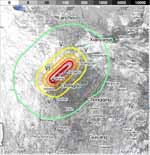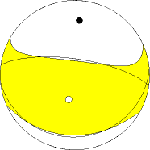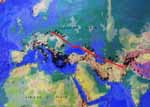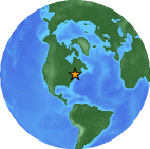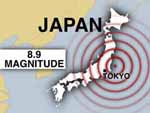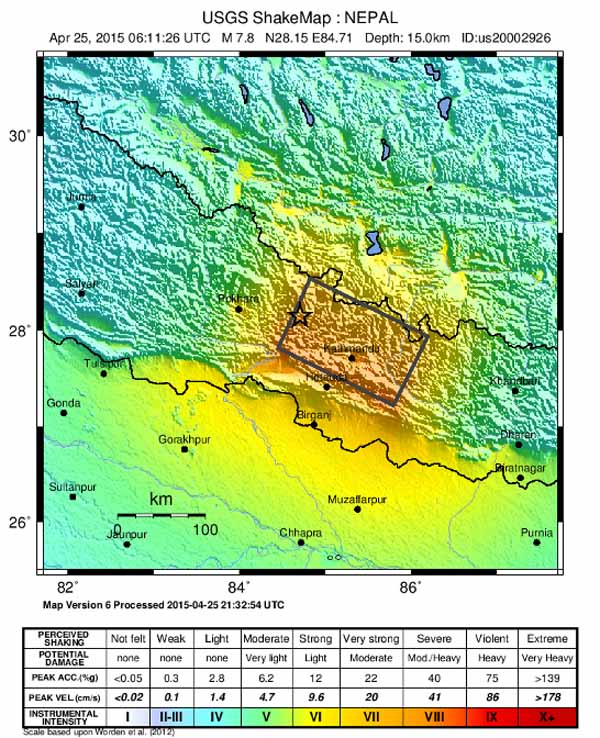 |

|
|
Crustal Earthquakes.
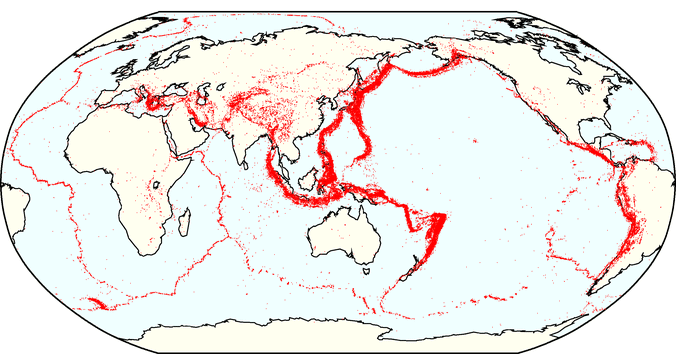 Plate boundaries in continental crust are generally less sharply defined than in the oceans, with seismicity spread over broad areas. Interplate displacements appear to be largely accommodated by networks of major fault zones. The depth to which microseismic activity extends appears inversely related to regional heat flow and can be satisfactorily modelled as the frictional/quasi-plastic transition for different geotherms using laboratory determined flow laws for quartz-bearing rocks. Larger earthquake ruptures (M > 5.5) tend to nucleate near the base of the seismogenic regime in the region inferred to have the highest shear resistance and concentration of distortional strain energy. Earthquakes from three different sources threaten communities in the seismic regions. These sources are crustal, subduction zone, intraplate, and volcanic earthquakes. The most common are crustal earthquakes, which typically occur along faults, or breaks in the earth’s crust, at shallow depths of 10-20 km below the surface.
Plate boundaries in continental crust are generally less sharply defined than in the oceans, with seismicity spread over broad areas. Interplate displacements appear to be largely accommodated by networks of major fault zones. The depth to which microseismic activity extends appears inversely related to regional heat flow and can be satisfactorily modelled as the frictional/quasi-plastic transition for different geotherms using laboratory determined flow laws for quartz-bearing rocks. Larger earthquake ruptures (M > 5.5) tend to nucleate near the base of the seismogenic regime in the region inferred to have the highest shear resistance and concentration of distortional strain energy. Earthquakes from three different sources threaten communities in the seismic regions. These sources are crustal, subduction zone, intraplate, and volcanic earthquakes. The most common are crustal earthquakes, which typically occur along faults, or breaks in the earth’s crust, at shallow depths of 10-20 km below the surface.Great subduction zone earthquakes occur around the world where the tectonic plates that make up the surface of the earth collide. When these plates collide, one plate slides (subducts) beneath the other, where it is reabsorbed into the mantle of the earth. This dipping interface between the two plates is the site of some of the most powerful earthquakes ever recorded, often having magnitudes of 8 to9 or larger. Deeper intraplate earthquakes occur within the remains of the ocean floor that is being subducted beneath North America. Lower-crustal EarthquakesThe lower crust of magmatically active rifts is usually too hot and ductile to allow seismicity. The microearthquakes to be caused by melt moving through the crust from the magma source feeding volccano. They represent bursts of magma motion opening dykes over distances of a few meters, facilitated by the extensional setting of the active rift zone. Historic triangulation data have been analysed to determine whether intraplate seismicity is associated with ongoing ductile deformation in the lower crust. beneath an elastic-seismogenic upper crust ~20 km thick, strain is preferentially localized within ductile shear zones in the lower crust due to broad-scale plate driving forces. The localized lower-crustal ductile strain causes stress and strain to accumulate elastically in the brittle crust which is eventually released in crustal earthquakes. At greater depths, this localized shear deformation probably develops into pervasive ductile flow. The occurrence of earthquakes in the lower crust near continental rifts has long been puzzling, as the lower crust is generally thought to be too hot for brittle failure to occur. Such anomalous events have usually been explained in terms of the lower crust being cooler than normal3, 4. But if the lower crust is indeed cold enough to produce earthquakes, then the uppermost mantle beneath it should also be cold enough2, and yet uppermost mantle earthquakes are not observed. |
